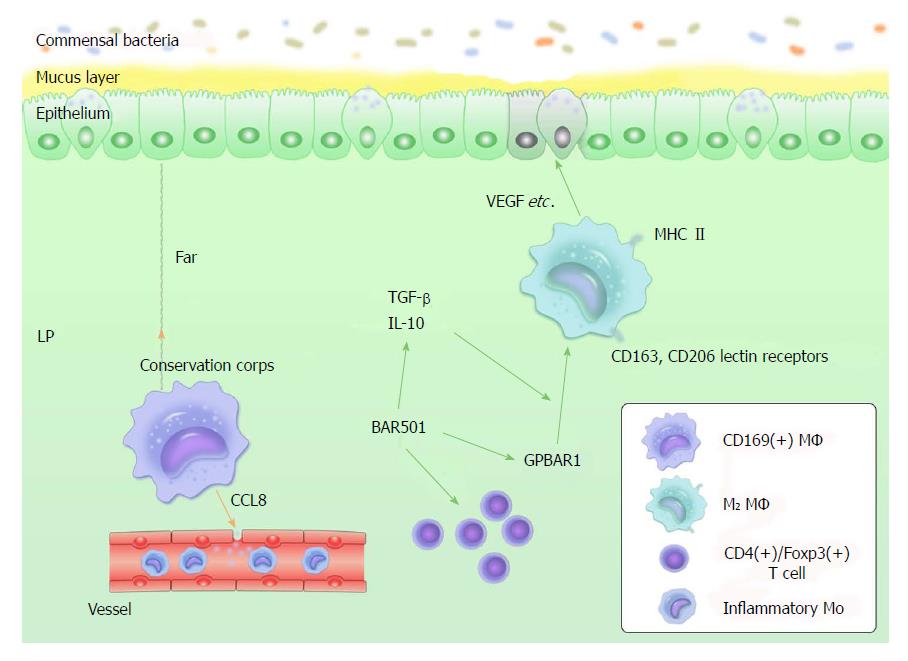Copyright
©The Author(s) 2018.
World J Gastroenterol. Mar 21, 2018; 24(11): 1181-1195
Published online Mar 21, 2018. doi: 10.3748/wjg.v24.i11.1181
Published online Mar 21, 2018. doi: 10.3748/wjg.v24.i11.1181
Figure 2 Current views about intestinal macrophages.
(1) LP-resident CD169+ MΦ reside at the bottom-end of the LP microenvironment, far away from the epithelium-LP border. CD169+ MΦ recruit inflammatory monocytes by producing CCL8. CD109+ MΦ can be considered as a "conservation corps" in the intestine because they likely respond to the collapse of frontline defense; (2) M2 MΦ are MHCII+, producing IL-10 and expressing CD163, CD206 and lectin receptors. They do not produce proinflammatory mediators with signals of stimulation. In addition, they produce tissue-repairing factors, such as VEGF, actin and metalloproteinases; and (3) GPBAR1 is essential to maintain intestinal immune homeostasis by regulating M1/M2 MΦ. BAR501 is a small-molecule stimulus for GPBAR1. It contributes to this regulative process, depending on the production control of IL-10. Exposure to BAR501 leads to increased expression of IL-10, TGF-β mRNA and the percentage of CD4+/Foxp3+ cells. IL: Interleukin; LP: Lamina propria; MΦ: Macrophages; TGF: Tumor growth factor; VEGF: Vascular endothelial growth factor.
- Citation: Liu YH, Ding Y, Gao CC, Li LS, Wang YX, Xu JD. Functional macrophages and gastrointestinal disorders. World J Gastroenterol 2018; 24(11): 1181-1195
- URL: https://www.wjgnet.com/1007-9327/full/v24/i11/1181.htm
- DOI: https://dx.doi.org/10.3748/wjg.v24.i11.1181









